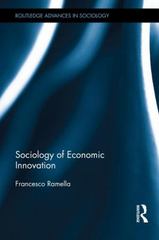Q24/25. 25 need to mention about accelaror
Extract C: How should we pay for roads? Roads, and transport generally, must be paid for. As more cars become electrified and fuel-efficient, the amount of revenue raised from petrol, diesel and other taxes on vehicles, will fall substantially in the future. The Institute for Fiscal Studies (IFS) estimates that replacing this lost revenue would require a 50% increase in taxes on fuel and they have argued that the government should review the present system of road taxes and 5 move towards a nationwide system of road pricing. One solution is to charge drivers for each mile travelled, with higher prices in congested areas at peak times. The aim of road pricing is to charge drivers for the costs they impose on other road users, and non-road users, to optimise the use of scarce road space. A small reduction in the number of vehicles on the road at peak times would 10 produce a large reduction in congestion. Taxes on fuel are another way to make the user pay for the external costs of motoring. Fuel tax collection costs are estimated at just 0.2% of the revenue generated. Road pricing, on the other hand, has high set-up and running costs (at least 10% of the revenue raised) but these costs are likely to fall due to economies of scale and 15 improvements in technology. However, there is also the issue of fairness to consider. The less-well-off motorists may be priced off the roads by a system of road pricing but fuel taxes also hit the poor hardest. Source: News Reports, August 2012 Turn over for Context 1 questions Context 1 - Questions 21 to 26 2 1 Define the term 'cross elasticity of demand' (Extract B, line 9). [3 marks] 2 2 Using Extract A, calculate the mean number of cars using 'Other fuels' for the period 2003 to 2012 [4 marks] 2 3 Using Extract A, identify two significant points of comparison between those cars in Great Britain that use petrol and those that use diesel over the period shown. [4 marks] 2 4 Extract C (line 15) states that 'costs are likely to fall due to economies of scale'. Draw a diagram showing both economies and diseconomies of scale as output increases. [4 marks] 2 5 Extract C (lines 3-4) states that 'The Institute of Fiscal Studies (IFS) estimates that replacing this lost revenue would require a 50% increase in taxes on fuel'. Explain how the price elasticity of demand for road travel will affect the total revenue that the government receives if it increases the taxes on fuel. [10 marks]







